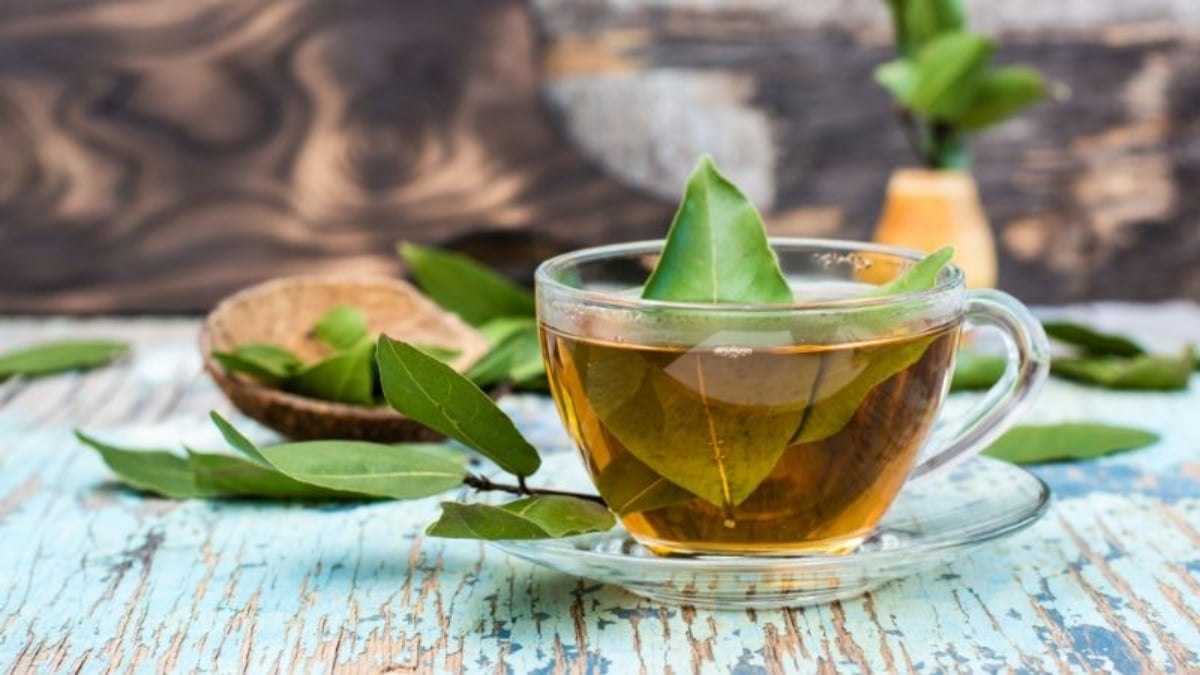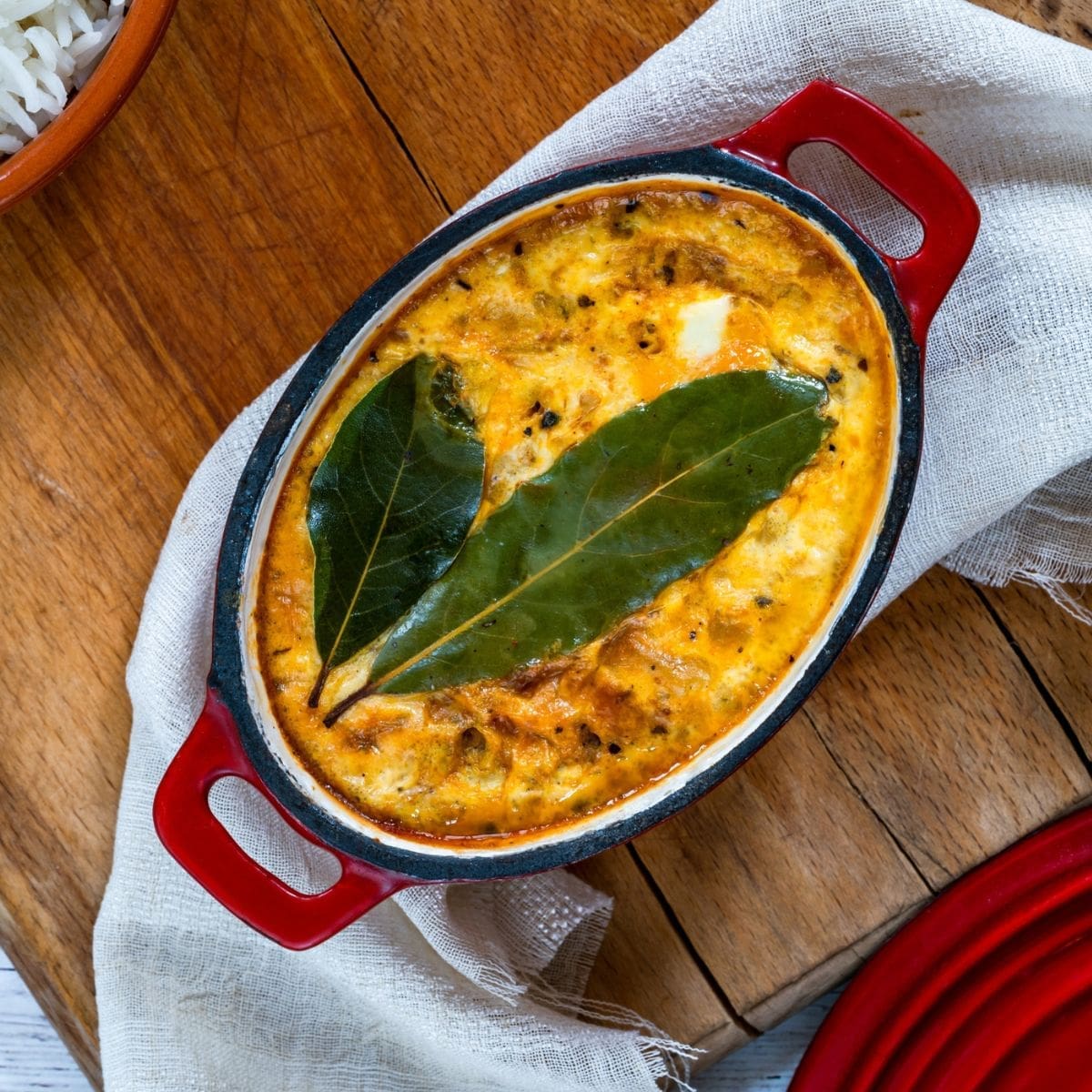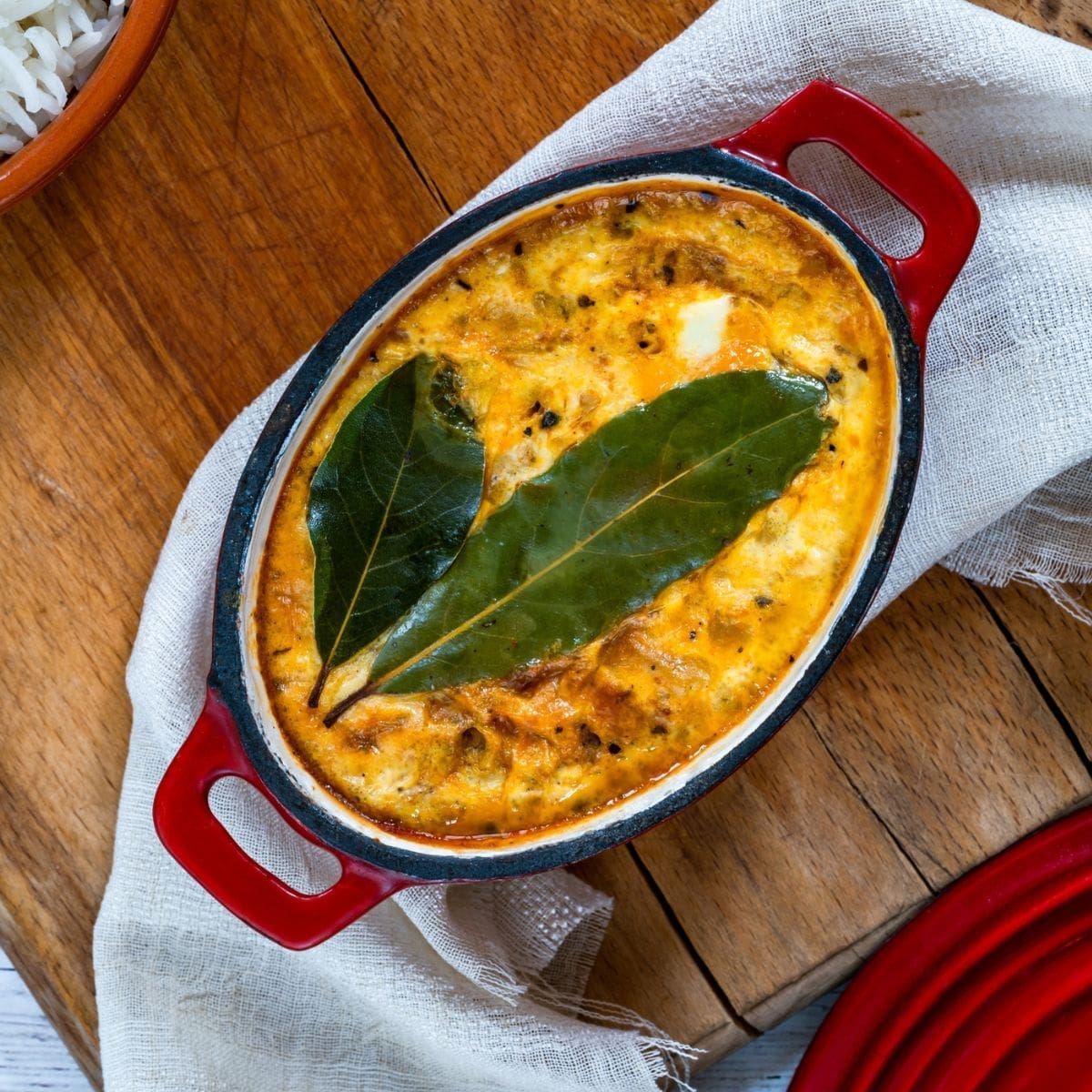How to Cook Without Bay Leaves Using These Tasty Alternatives sets the stage for a culinary exploration, delving into the world of aromatic substitutes for this ubiquitous herb. While bay leaves offer a distinctive earthy and slightly bitter flavor, their absence needn’t be a culinary setback.
This guide explores a diverse range of herbs and spices that can seamlessly replace bay leaves, adding depth and complexity to your dishes.
From the familiar warmth of thyme to the citrusy zest of lemon peel, a world of flavorful alternatives awaits. We’ll delve into the unique characteristics of each substitute, offering tips on how to use them effectively to achieve the desired taste profile in various cuisines.
Whether you’re simmering a hearty stew, roasting a succulent chicken, or grilling vegetables, this guide will equip you with the knowledge to confidently navigate the world of bay leaf substitutes.
The Allure of Bay Leaves

Bay leaves, with their earthy, slightly bitter, and herbaceous aroma, are a culinary staple that adds depth and complexity to a wide range of dishes. These leaves, derived from the evergreen laurel tree, have a rich history, dating back to ancient civilizations.
Bay leaves are versatile, lending their distinct flavor to savory dishes, soups, stews, sauces, marinades, and even desserts. Their aroma is particularly prominent in Mediterranean and French cuisine.While bay leaves are a beloved ingredient, there are instances when a cook might need to avoid them.
This could be due to an allergy, unavailability, or simply a desire to explore alternative flavor profiles.
Reasons for Avoiding Bay Leaves
There are several reasons why a cook might choose to avoid bay leaves.
- Allergies: Some individuals are allergic to bay leaves, experiencing symptoms such as skin rash, itching, or digestive issues.
- Availability: Fresh bay leaves can be challenging to find in some regions, and dried bay leaves may not always be readily available.
- Flavor Preferences: Some cooks might prefer to experiment with alternative flavor profiles or create dishes with a different flavor emphasis.
Aromatic Alternatives to Bay Leaves
While bay leaves are undeniably a staple in many cuisines, their absence needn’t spell culinary disaster. A world of aromatic herbs and spices offers exciting alternatives, each contributing its own unique flavor profile to your dishes.
Herbal and Spicy Substitutes for Bay Leaves
A wide range of herbs and spices can effectively replace bay leaves, providing a diverse array of flavor nuances. Understanding their individual characteristics and applications can elevate your cooking experience.
- Thyme:Known for its earthy, slightly lemony flavor, thyme complements savory dishes like stews, soups, and roasted vegetables. Its subtle, lingering aroma enhances the overall flavor profile without overpowering other ingredients.
- Rosemary:With its distinct piney and slightly camphoraceous notes, rosemary is a natural fit for hearty dishes like roasts, lamb, and poultry. Its robust flavor adds depth and complexity to the final dish.
- Sage:Sage offers a complex flavor profile, blending earthy notes with hints of bitterness and a touch of sweetness. It pairs well with hearty meats like pork, poultry, and sausages, adding a rustic touch.
- Oregano:This herb’s earthy, slightly peppery flavor is a staple in Mediterranean and Italian cuisine. Its robust aroma complements tomato-based dishes, pizzas, and pasta sauces.
- Marjoram:Marjoram’s subtle, sweet, and slightly peppery flavor profile makes it a versatile herb. It works well in poultry dishes, soups, stews, and even baked goods.
- Parsley:Though often used as a garnish, parsley can also add a fresh, herbaceous flavor to dishes. Its bright, slightly peppery flavor complements a wide range of cuisines, including Mediterranean, Italian, and Middle Eastern.
- Black Peppercorns:While not strictly an herb, black peppercorns can add a warm, spicy kick to dishes. Their pungent aroma and heat complement savory dishes like stews, soups, and meat rubs.
- Allspice:This spice, often called “Jamaica pepper,” offers a unique blend of cinnamon, nutmeg, and clove flavors. It adds a warm, slightly spicy note to dishes like baked ham, stews, and marinades.
- Star Anise:This star-shaped spice has a licorice-like flavor and a strong, aromatic scent. It’s commonly used in Asian cuisine, adding a distinctive flavor to stews, soups, and stir-fries.
Tips for Using Bay Leaf Alternatives
To effectively substitute bay leaves, consider the following tips:
- Experiment with Ratios:Since each alternative offers a unique flavor profile, start with a small amount and adjust based on your preference. Remember that a little goes a long way.
- Use Whole Spices:For herbs like thyme, rosemary, and sage, use whole sprigs for a more pronounced flavor. You can also use dried herbs, adjusting the amount accordingly.
- Consider the Cooking Method:For long-cooking dishes like stews and soups, add the herbs or spices early on to allow their flavors to infuse fully. For shorter cooking times, add them towards the end to retain their freshness.
- Infuse Oils:To create flavorful infused oils, add your chosen herbs or spices to a neutral oil like olive oil or vegetable oil. Let the mixture steep for a few hours or overnight, then strain the oil before using.
Culinary Techniques for Using Bay Leaf Substitutes

While bay leaves are a beloved staple in many cuisines, their absence shouldn’t deter you from crafting delicious dishes. The aromatic alternatives discussed earlier can be seamlessly integrated into your cooking methods, delivering similar flavor profiles and enriching your culinary creations.
Incorporating Bay Leaf Substitutes in Different Cooking Methods
The versatility of bay leaf substitutes allows them to be used in various cooking methods, adding depth and complexity to your dishes.
- Simmering:When simmering soups, stews, and sauces, add the substitute during the initial stages of cooking to allow its flavors to infuse fully. For example, when making a tomato-based sauce, adding a sprig of rosemary or a few thyme sprigs during the simmering process will create a rich and aromatic base.
- Roasting:For roasting vegetables, meats, and poultry, tuck the substitute into the cavity or place it directly on the food. This method allows the heat to extract the aromatic compounds, imparting a delightful flavor to the dish. For instance, when roasting a chicken, tucking a few sage leaves into the cavity will enhance its flavor profile.
- Grilling:For grilling, use the substitute as a marinade or rub, infusing the food with its unique aroma. For instance, when grilling salmon, rubbing it with a mixture of lemon zest and fresh oregano will create a flavorful and aromatic crust.
Using Bay Leaf Substitutes in Different Cuisines
Bay leaf substitutes can be incorporated into various cuisines, offering a unique twist on traditional flavors.
- Mediterranean:In Mediterranean cuisine, oregano, thyme, and rosemary are frequently used as bay leaf substitutes. These herbs are commonly found in dishes like lamb stew, roasted vegetables, and grilled fish. For instance, using rosemary in a lamb stew will create a traditional Mediterranean flavor profile.
- Asian:In Asian cuisine, star anise, cinnamon, and cloves are often used as bay leaf substitutes. These spices are commonly found in dishes like stir-fries, curries, and soups. For instance, using star anise in a stir-fry with chicken and vegetables will add a unique Asian flavor.
- European:In European cuisine, sage, marjoram, and tarragon are often used as bay leaf substitutes. These herbs are commonly found in dishes like roasted chicken, mushroom sauces, and fish dishes. For instance, using tarragon in a fish dish will create a classic European flavor.
Recommended Alternatives for Different Dishes
Choosing the right substitute for your dish depends on the desired flavor profile. The table below showcases some recommended alternatives for various types of dishes:
Dish |
Recommended Alternatives |
Recommended Amount |
|---|---|---|
Soups and Stews |
Thyme, rosemary, sage, oregano, bay leaf substitute blend |
1-2 sprigs or 1/2 teaspoon dried herbs |
Roasted Vegetables |
Rosemary, thyme, sage, oregano, marjoram |
1-2 sprigs or 1/2 teaspoon dried herbs |
Roasted Meats |
Rosemary, thyme, sage, oregano, garlic, peppercorns |
1-2 sprigs or 1/2 teaspoon dried herbs |
Grilled Fish |
Oregano, thyme, rosemary, lemon zest, dill |
1-2 sprigs or 1/2 teaspoon dried herbs |
Asian Dishes |
Star anise, cinnamon, cloves, ginger, garlic |
1-2 star anise, 1/2 inch cinnamon stick, 2 cloves, 1 inch ginger, 1 clove garlic |
Bay Leaf Substitutes in Action: Recipe Examples: How To Cook Without Bay Leaves Using These Tasty Alternatives
Bay leaf substitutes can elevate the flavor profiles of countless dishes, bringing depth and complexity without the need for the traditional bay leaf. Here are a few recipe examples showcasing the versatility of these alternatives.
Mediterranean Cuisine, How to Cook Without Bay Leaves Using These Tasty Alternatives
Bay leaves are a staple in Mediterranean cuisine, lending their signature aroma to stews, soups, and sauces. However, their absence needn’t be a culinary setback.
- Greek Lemon Chicken with Thyme and Rosemary:This recipe utilizes the combined aromatic power of thyme and rosemary to mimic the essence of bay leaves. The citrusy notes of lemon juice complement the herbaceous flavors, creating a harmonious balance.
- Moroccan Tagine with Saffron and Coriander:Saffron, a spice known for its delicate floral notes, and coriander, with its earthy and citrusy undertones, work together to impart a similar complexity to bay leaves in this traditional Moroccan tagine.
The saffron adds a subtle sweetness, while the coriander contributes a warm and pungent flavor.
Asian Cuisine
Bay leaf substitutes can seamlessly integrate into the diverse flavors of Asian cuisine, offering a nuanced approach to flavor enhancement.
While bay leaves add a distinct aroma to dishes, finding substitutes is easy! From thyme to rosemary, many herbs can mimic that earthy flavor. Speaking of growth, you might want to check out this article on How to Maximize Grass Seed Growth in September to ensure your lawn thrives.
Just like herbs enhance your culinary creations, proper care will help your grass flourish. So, whether you’re experimenting with different herbs in the kitchen or nurturing a lush lawn, remember that understanding the basics can lead to fantastic results!
- Thai Green Curry with Lemongrass and Galangal:This aromatic curry relies on the potent combination of lemongrass and galangal to achieve a complex flavor profile. Lemongrass, with its citrusy and slightly pungent notes, and galangal, with its earthy and slightly peppery taste, provide a harmonious substitute for bay leaves.
- Vietnamese Pho with Star Anise and Cinnamon:Star anise, known for its licorice-like flavor, and cinnamon, with its warm and sweet notes, offer a compelling alternative to bay leaves in this classic Vietnamese noodle soup. The combination of these spices creates a complex and fragrant broth, reminiscent of the traditional bay leaf flavor.
While bay leaves offer a distinct aroma and flavor, there are many delicious alternatives to consider. From thyme and rosemary to sage and oregano, each herb brings its own unique character to your dishes. And speaking of unique, have you ever wondered about the secret to finding those lucky four-leaf clovers?
You can learn more about The Best Tips for Finding and Cultivating Four Leaf Clovers – a great way to add a touch of luck to your culinary adventures! Back to the topic of bay leaf substitutes, don’t be afraid to experiment and discover your own favorite flavor combinations.
American Cuisine
The versatility of bay leaf substitutes extends to American cuisine, adding depth and complexity to familiar dishes.
- Southern Fried Chicken with Thyme and Sage:Thyme and sage, both known for their earthy and slightly peppery flavors, work together to mimic the flavor profile of bay leaves in this classic Southern dish. The combination of these herbs adds a distinct depth to the fried chicken, complementing the crispy exterior and juicy interior.
- New England Clam Chowder with Thyme and Bay Leaf:This recipe showcases the adaptability of bay leaf substitutes. While traditional clam chowder often features bay leaves, substituting thyme for a more subtle and delicate flavor profile is a viable option. Thyme adds a refreshing herbal note, complementing the creamy chowder base and briny clams.
Conclusion: Embracing Flavor Exploration
Stepping beyond the confines of the traditional bay leaf opens a world of culinary possibilities. By exploring the diverse range of bay leaf substitutes, you unlock a spectrum of flavors that can elevate your dishes from ordinary to extraordinary.
Embracing Culinary Creativity
Each substitute brings its own unique aroma and taste profile, allowing you to experiment with flavor combinations and create dishes that reflect your personal preferences. The versatility of these alternatives encourages culinary exploration, empowering you to discover new flavor profiles and enhance your cooking repertoire.
Expanding Flavor Horizons
- Spice Blends:Explore pre-made spice blends that incorporate bay leaf alternatives, such as Herbes de Provence, which combines thyme, rosemary, marjoram, and savory. This blend offers a complex, earthy flavor that can be used in various dishes.
- Flavor Profiles:Experiment with different combinations of bay leaf substitutes to create unique flavor profiles. For instance, using a combination of dried thyme and rosemary in a tomato sauce can create a robust, earthy flavor that complements the sweetness of the tomatoes.
- Regional Cuisine:Explore the use of bay leaf substitutes in regional cuisines. For example, using dried oregano in Italian dishes, or adding a pinch of ground coriander to Moroccan stews, can enhance the authenticity of the flavors.
Epilogue
As you embark on your culinary journey with bay leaf substitutes, remember that flavor exploration is an exciting adventure. Don’t be afraid to experiment with different combinations and discover your own preferred substitutions. With a little creativity and the right ingredients, you can elevate your dishes to new heights of flavor, even without the traditional bay leaf.
Question & Answer Hub
What is the best substitute for bay leaves in a tomato-based sauce?
Thyme is an excellent choice for tomato-based sauces as it complements the acidity and adds a warm, earthy note.
Can I use dried bay leaf substitutes?
Yes, dried herbs and spices can be used as substitutes. However, use them in smaller quantities than fresh herbs, as they are more concentrated in flavor.
Are there any substitutes for bay leaves in desserts?
While bay leaves are not typically used in desserts, you can experiment with spices like cinnamon, nutmeg, or cardamom for a warm and aromatic flavor.
